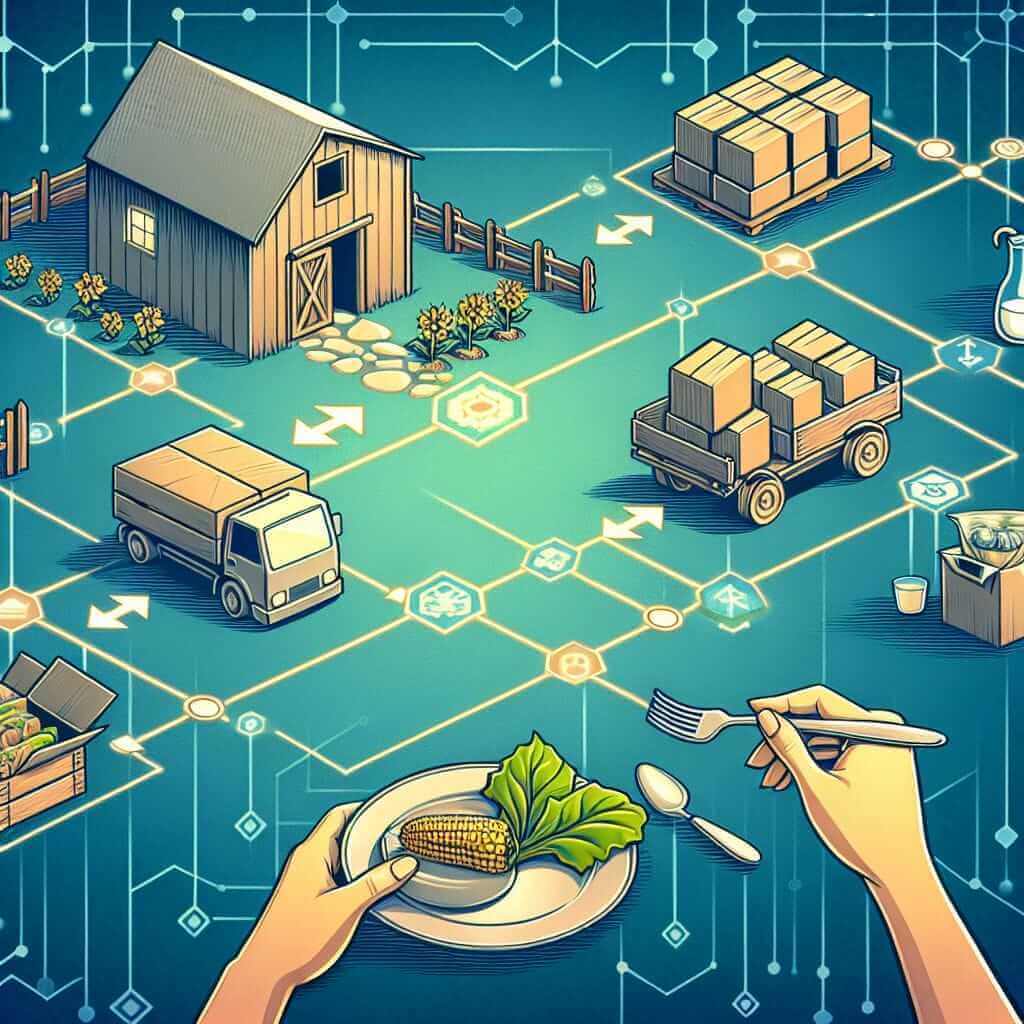The IELTS Reading section is a critical component of the IELTS exam, designed to assess a candidate’s ability to understand and interpret written English. Topics for the IELTS Reading section are diverse and often reflect current trends and real-world issues. One such topic that has garnered significant attention is the application of blockchain technology in enhancing food supply chain transparency. As blockchain continues to revolutionize various industries, its potential to improve food safety, traceability, and quality assurance is worth exploring. This article will provide a sample reading passage and questions to help IELTS candidates practice their reading skills and understand this crucial topic.
Reading Passage and Questions
Passage: Blockchain and Food Supply Chain Transparency
Introduction to Blockchain in the Food Supply Chain
Blockchain technology, originally developed for cryptocurrency transactions, has found a new application in the food industry. By providing a decentralized and immutable ledger, blockchain enhances transparency and traceability in the food supply chain. This technology allows stakeholders to track the journey of food products from farm to table, ensuring safety and quality at every step.
Benefits of Blockchain for Food Supply Chains
One of the primary benefits of blockchain in the food industry is improved traceability. In the traditional supply chain, tracking the origin and movement of food items can be cumbersome and prone to errors. Blockchain eliminates these issues by providing a transparent record that is accessible to all parties involved. This added visibility helps prevent food fraud and ensures that consumers receive products that meet safety standards.
Furthermore, blockchain enhances efficiency in recall processes. In the event of a food safety issue, companies can pinpoint the exact origin of the problem and take swift action to remove contaminated products from the market. This rapid response not only protects consumers but also helps maintain brand reputation.
Case Studies and Real-World Applications
Several companies have successfully implemented blockchain in their supply chains. For instance, Walmart has partnered with IBM to use blockchain for tracking leafy greens. By scanning a QR code, consumers can access detailed information about the product, including its farm of origin, the date of harvest, and its journey through the supply chain. This level of transparency builds consumer trust and fosters a sense of responsibility among producers.

Questions
Multiple Choice
-
What is the primary advantage of using blockchain in the food supply chain?
- A. Reducing production costs
- B. Improving traceability and transparency
- C. Enhancing marketing strategies
- D. Increasing shelf life of products
-
How does blockchain help in recall processes?
- A. By delaying the identification of the issue
- B. By providing a detailed and accessible record of food origins
- C. By reducing the likelihood of food safety issues
- D. By increasing the number of checkpoints in the supply chain
True/False/Not Given
- Blockchain technology was initially developed for use in the food industry.
- Walmart uses blockchain technology to track the origin of all its products.
Sentence Completion
- One benefit of blockchain in food supply chains is _____, ensuring safety and quality at every step.
- Blockchain helps prevent food fraud by providing a ___ record.
Answer Keys
- B. Improving traceability and transparency
- B. By providing a detailed and accessible record of food origins
- False. Blockchain technology was initially developed for cryptocurrency transactions.
- Not Given. The passage specifies that Walmart uses blockchain for tracking leafy greens but does not mention all products.
- traceability
- transparent
Common Mistakes and Tips
Mistake #1: Not thoroughly understanding the passage before answering questions.
Tip: Skim the passage first to get a general idea, then read it again more carefully.
Mistake #2: Misinterpreting “Not Given” statements.
Tip: “Not Given” means the passage doesn’t provide enough information to answer true or false.
Mistake #3: Overlooking specific details in Multiple Choice questions.
Tip: Return to relevant sections of the passage to look for specific information that answers the question accurately.
Vocabulary
- Immutable (adj) /ɪˈmjuːtəbl/: unchanging over time or unable to be changed.
- Traceability (n) /ˌtreɪsəˈbɪlɪti/: the ability to verify the history, location, or application of an item by means of documented recorded identification.
- Decentralized (adj) /ˌdiːˈsɛntrəˌlaɪzd/: transferring control from a centralized entity to multiple smaller ones.
Grammar
Passive Voice:
Structure: [Subject] + [form of “to be”] + [past participle] (by + [agent]).
Example: “Blockchain technology is used to enhance transparency.”
Relative Clauses:
Structure: [Main Clause], [relative pronoun] + [subject] + [verb].
Example: “Blockchain provides a transparent record that is accessible to all parties involved.”
Conclusion and Advice
Practice makes perfect when preparing for the IELTS Reading section. Familiarize yourself with diverse topics and practice interpreting text efficiently. Enhance your vocabulary and comprehension skills by reading extensively. Always approach your preparation with a clear, systematic method and focus on understanding the structure and format of the questions. Remember, mastering the reading section requires consistent practice and a keen eye for detail. Good luck!
Internal Links:
Read More About Blockchain in Supply Chains